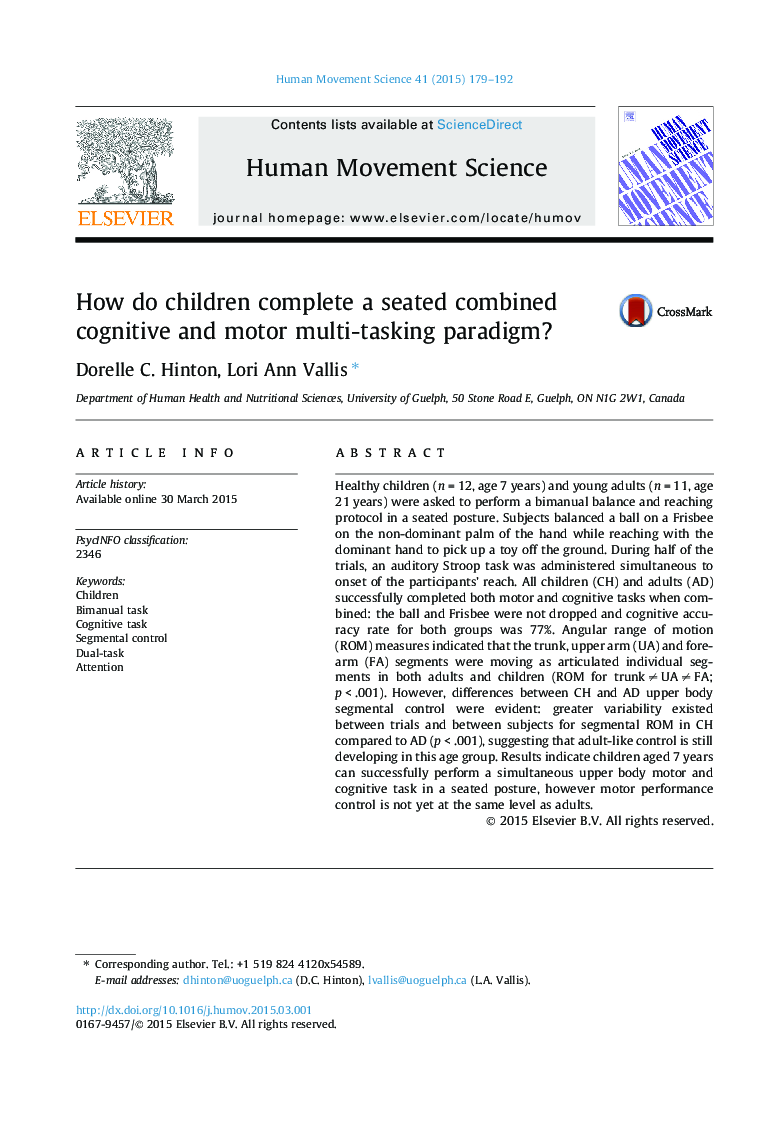| Article ID | Journal | Published Year | Pages | File Type |
|---|---|---|---|---|
| 7291976 | Human Movement Science | 2015 | 14 Pages |
Abstract
Healthy children (n = 12, age 7 years) and young adults (n = 11, age 21 years) were asked to perform a bimanual balance and reaching protocol in a seated posture. Subjects balanced a ball on a Frisbee on the non-dominant palm of the hand while reaching with the dominant hand to pick up a toy off the ground. During half of the trials, an auditory Stroop task was administered simultaneous to onset of the participants' reach. All children (CH) and adults (AD) successfully completed both motor and cognitive tasks when combined: the ball and Frisbee were not dropped and cognitive accuracy rate for both groups was 77%. Angular range of motion (ROM) measures indicated that the trunk, upper arm (UA) and forearm (FA) segments were moving as articulated individual segments in both adults and children (ROM for trunk â  UA â  FA; p < .001). However, differences between CH and AD upper body segmental control were evident: greater variability existed between trials and between subjects for segmental ROM in CH compared to AD (p < .001), suggesting that adult-like control is still developing in this age group. Results indicate children aged 7 years can successfully perform a simultaneous upper body motor and cognitive task in a seated posture, however motor performance control is not yet at the same level as adults.
Related Topics
Life Sciences
Neuroscience
Cognitive Neuroscience
Authors
Dorelle C. Hinton, Lori Ann Vallis,
